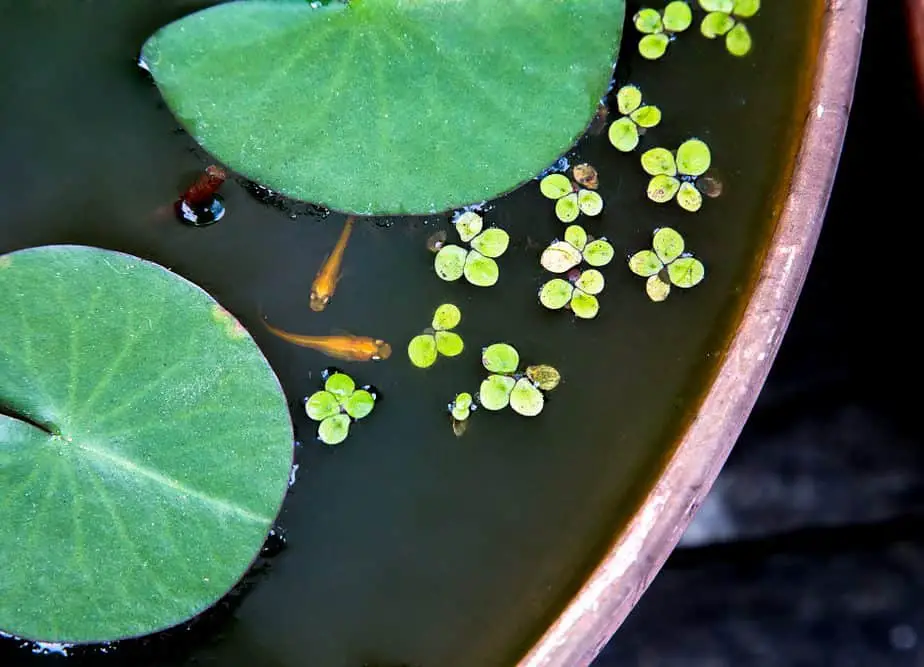
Classic Oryzias latipes specimens are of beautiful silver color but these fish come in many hues and colors in the wild and captivity. You might wonder if specimens of different colors and with slight variations in the body type can mix and breed if kept in one aquarium.
Different strains of Medaka, or Japanese rice fish, can mix and breed in one tank. The different kinds of the same species need nearly identical conditions for breeding, and their juveniles are viable and healthy. Japanese rice fish can come out in many colors and patterns if parent specimens are of different strains. Fish of solid colors often produce fry with the body of one color and the head of the other.
The Variety Within Medaka Fish Species
Japanese rice fish can come in several shapes and multiple colors. Medaka can be of a solid color, two or three colors, and various patterns. There are hundreds of possible variations, some occurring naturally, and others fish were bred to have specific traits.
All the different strains of Medaka belong to the same species, which is why there are usually no problems with mating.
Some of the most common strains of Medaka, or Japanese rice fish, are the following:
- Silver Medaka
- Yokihi red Medaka
- Black Medaka
- Blue Miyuki Medaka
- Dharma Medaka
- Black Medaka
- Sansyoku three-color Medaka
- Ougon golden Medaka
- Lame Medaka
- Swallow Medaka
- Sarasa red and white Medaka
- Pearl Medaka
- Shinkai blue Medaka
Japanese Rice Fish in a Community Fish
Japanese rice fish are docile, easy-going, and hardy – overall, quite perfect for a community aquarium. Medaka coexist peacefully with many other fish species and can live well with other strains of the same species.
Medaka rice fish are among several species of coldwater fish that are great for community aquariums and do not need much equipment in the tank.
In addition to not overcrowding the tank, keep your Medaka in a group of at least six fish. Different strains of the same species need the same conditions, which should include the following:
| Optimum water temperature: 64° – 75° F (18° – 24° C) |
| Minimum tank size: 10 gallons (38 L) for a school of 6 |
| Ph: 7.0-8.0 |
| Diet: omnivore |
Breeding Different Strains of Japanese Rice Fish
Oryzias latipes are very sturdy and easy to breed fish, in general. So, if the conditions are right for breeding, different kinds of Medaka should easily produce offspring, potentially unique-looking juveniles. For example, breeding two fish of various solid colors could result in fish with a body of one color and a head/neck of the other color.
Breeding different kinds of fish could also reduce genetic drift due to inbreeding. A hybrid juvenile of two inbred strains does not inherit undesirable recessive genes, so there could be a positive impact on the offspring.
How to Breed Medaka Fish
Check out this detailed and very informative YouTube video by Ryo Watanabe on caring for medaka and breeding them, in particular:
Breeding different strains of Medaka fish is not different from breeding Medaka fish that look identical.
To encourage mating, place a male and a female into a 3 to 5-gallon (17-L ) tank, separate from other fish. It is okay to use a smaller aquarium but if you let several pairs breed in one tank, your fish will need the space. A school of Japanese rice fish can be in the same tank for breeding but should be separated from other community fish.
- Room temperature is fine for the period of breeding. Some breeders note that temperatures in the higher optimal range are better for mating fish and producing more offspring. 16-25°C (60-77°F) is a comfortable range of temperatures for Medaka
- Keep the pH between 6.5 and 8.5
- If you use a filter, it should produce very light bubbling and movement of the water
- Make sure there is some decorative object in the breeding tank. The fish must lay eggs. Java moss is a great option, perfect for depositing eggs
- You could use a lid for the fish tank if you notice that some of your Medaka fish tend to jump
- About 10 days after the fish mate, remove the decoration the fish used to deposit eggs. Place the moss of any item that was used into a new aquarium
- Eggs will hatch within 10-14 days
- Juveniles are very independent from the beginning
See-Through Medaka Fish
If you have some see-through Japanese rice fish among your pet fish, they also could breed with ricefish of other strains and produce viable offspring. However, some of the juveniles could be less healthy or at least smaller than other Medaka fry.
Transparent Medaka fish lack pigment, which is the reason they do not have color. The theory is that they could have poor vision, just like most people with the albino trait. Decreased visual acuity in affected fish could cause malnutrition since these specimens compete for food with fish that can see well.
Japanese rice fish without pigment can still be healthy and are easy to breed. That is why they have been used in several studies to research metabolism and other processes because the internal organs of these fish are easy to visualize thanks to their transparent bodies.
To Conclude
Many fish owners find pet fish to be entertaining to watch and easy to care for. Owners of Japanese rice fish often find it interesting and therapeutic to see the surprise of what hybrid fish could look like.
In addition, breeding Medaka is relatively easy and most novice fish owners are equal to the task. Please check out our post on frequently asked questions about Japanese rice fish.
Recent Posts
Guinea pigs have excellent hearing, especially at high frequencies. They are more sensitive to high-pitched sounds than people. These pets should not be exposed to sounds loud enough that you would...
Guppy fish Dwarf gourami Choosing the right tank mates is so important for a peaceful community aquarium. Can guppies and dwarf gouramis live in one tank? Dwarf gourami and guppies can live...

